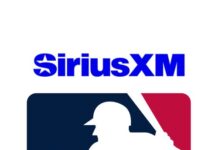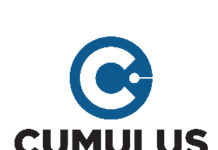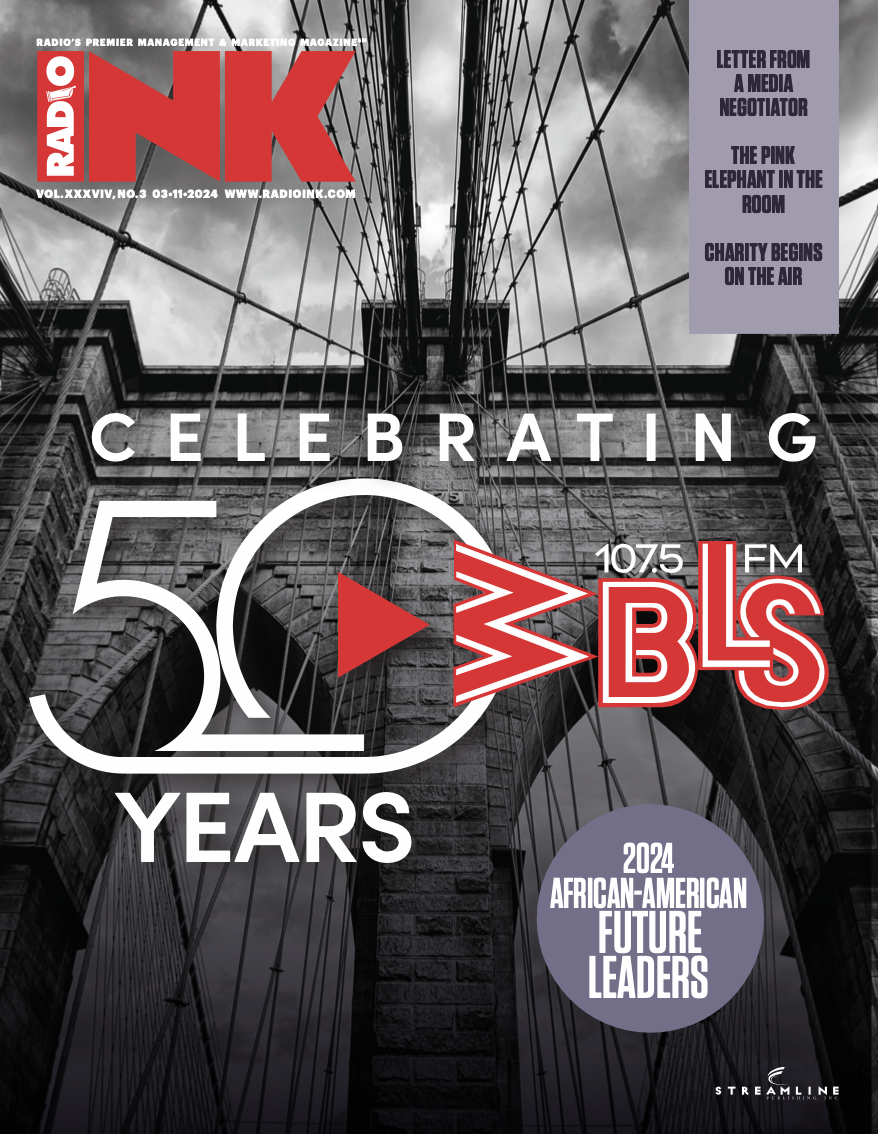
(By Mike McVay) Radio Ink’s Forecast 2023 is this week in New York City at the Harvard Club. It’s one of the events that I really enjoy attending because I can be a “fly on the wall” and hear from the leaders of media, which includes various platforms. I always leave Forecast excited, engaged, energized, and somewhat concerned. The honesty that comes from the featured speakers can be concerning, and at times downright scary, but it can also provide clarity that leads to opportunities for the business.
The question is … does anyone listen and take action or do they ignore the flashing “Low Fuel” light and pass this exit because they’re trying to make it to the next exit? We’re living in a world where listeners and advertisers (consumers) expect instant gratification, but the majority of us in media (the business) are acting as if everything is on our timetable and not theirs. There are many choices of where to spend your marketing money. Lots of places to listen. Radio, and the digital & podcasting we bring with it, is just one combined source.
It should go without saying that we need to be more focused on satisfying our advertisers and listeners wants and less focused on our needs. A book I read years ago, released in 1984, has been updated and rereleased. Spencer Johnson’s “One Minute Sales Person.” In the original, and validated in the reissue, is the statement “when my client gets what they want, I get what I want.” Those are words I’ve tried to live by with my business and words that all sellers should follow.
I’m not so sure that’s where we are in sales today and it isn’t where many of us are on the product side of the business. When I have a chance to speak to a sales team at a radio station, I always start the meeting by asking “what do we sell?” It’s not a trick question, but you’d think it was by the answers I receive. Air … Commercials. Not what I was looking for from sellers. We sell products, services, practices and branding. The list goes on, but you understand what I’m saying.
Radio sellers should be selling the power of radio to move an audience to action. We should be taking advantage of the strength of beloved personalities whose endorsement of a product or service magnifies their sell to the consumer. We should be asking more questions of the client and make our approach about, what Spencer Johnson suggests, in order to give the client what they want.
A lunch recently with a friend, whose resume includes being the CMO for several big companies, underscored for me that radio is still a good business, but that it isn’t is as focused and targeted as our digital competitors. There are exceptions. Townsquare comes to mind as one of them. There are other radio companies that have digital platforms, too. What this friend felt was that there’s a lot of waste on radio. Radio needs to figure out how to take advantage of our reach and target, as best we can, as digital targets. How can you narrow your focus to that area that an advertiser most cares about.
What else am I suggesting for 2023 and beyond? That we stop kicking the can down the road by living quarter-to-quarter and start focusing on a better sales effort to sell the benefit of audio marketing combined with digital and podcasting. To create dynamic content that advertisers want to be a part of for the association. To focus on communities and micro target to neighborhoods, both for advertising and for entertainment and communication,
If we truly have a recession on the horizon, there will still be people spending money on advertising and marketing, but will they spend it with you? How are you going to convince an advertiser that your station or platform is THE absolute best place to make an investment? How do they get an ROI? You have to stop selling advertising and sell for the advertiser what it is that they’re selling.
While I’m not ready to give up on my continual messaging that we have to improve the listening experience, I am willing to acknowledge that no one has the stomach to cut back on their commercial load at this point. We all know that radio plays too many commercial. If you’re willing to acknowledge that it is hard to listen and stay through 6-8 minutes of commercials, which could be 12-18 units or more, then you’re at least acknowledging that long stop-sets aren’t good for the listener or the advertiser. That alone should make you want to invest in better content that encourages someone to sit through a long break.
That is to say … if you want a listener to sit through a long commercial break … then you need to incentify them to stick around. What content can you create? What can a personality present, say or do? Is it a chance to win an experience or a lifechanging prize that will keep a listener listening? What surprise can you present that the audience wasn’t expecting? The objective should be to present content regularly that makes it worth the time investment to sit through 6-8 minutes of commercials.
Howard Stern was famous for playing commercials for most of a full quarter-hour. He held the audience, or at least they came back, because he was entertaining and his show was compelling. That was more than 15 years ago. There’s much more competition today than then, which makes the value of highly engaging personalities even more important, and not the line-item that companies should be eliminating to save money.
Personalities who can hold an audience, read an endorsement and motivate an audience to action, are possibly capable of disrupting those who are striving to disrupt radio. Look for that level of talent, be that by hiring them to work locally, or by becoming an affiliate of their syndicated program. You have to be a really good on-air performer to hold an audience given the competitive challenges of the day.
We have to be concerned with where the radio industry is today, but we don’t have to give up on it, and we shouldn’t believe that what is today is the way it’s going to be … and worse. We have great reach. We have the ability to create great content. We are given a chance every day to build and hold onto an audience. That isn’t going to last as radio becomes an optional choice in a car.
It’s not a secret what our weaknesses are and we know what we have to do to be better on-air for listeners and as a marketing medium for advertisers. If we don’t, I fear we will be no better than the entertainment newspaper you see in the rack by the door when you walk out of a restaurant.
Improving radio starts with the consideration of these key actions:
- Satisfy the advertisers and listeners wants. Don’t sell commercials. Sell the advertisers services, products and branding. Give them a clear return on their investment. Remember that when your client gets what they want, you get what you want.
- The only way to be recession proof is to be one of the biggest and most listened to stations in a category. Advertisers will still advertise, but they won’t buy as deep, so you have to be the best at delivering an advertising-friendly audience.
- Narrow your focus to that area that an advertiser most cares about. That is their target audience. Enhance your platform with your digital. Compete with digital that is not yours.
- Recognize those on-air personalities who have significant talent. Reward them for holding an audience through a long commercial break. If we’re not going to lower the spot-load, we have to have better entertainment and more compelling information to hold the audience.
- Invest in talent by providing greater well-organized training for them. On-air talent and Sales talent both benefit from coaching. The talent or seller that doesn’t believe they can benefit from continuing education is nearing the end of their growth cycle.
We should always want to be growing, learning, expanding our perspective and enriching our career. Be a change-maker. Stop accepting what is as it is and make it better. Being motivated to do so is among the reasons that I’ll be at Forecast 2023.
Mike McVay is President of McVay Media and can be reached at [email protected]







d or mentally tuned out? How about a 6 stop set an hour with fewer commercial or promotional
I agree with much of this. However at what point do we abandon the idea of 6-8–10 minute stop sets which not only alienate listeners but do a disservice to the client who is at the tail end when the audience has diminished or mentally tuned out? How about a 6 stop set an hour with fewer commercial or promotional interruptions in each so the entertainment segments return more quickly. After all the audience didn’t choose to listen to your station for commercials they chose it for the entertainment it supposedly offered. I believe that it’s time to dramatically rethink the idea of jamming 6 to 8 to 10 interruptions into a stop set in order to offer longer continuous entertainment segments is in itself defeating the goals.
It would be wonderful to have owners lower that spotload, but is seems as if no one has the stomach for that tactic. Which is why I suggest more powerful endorsements from engaging talent. Maybe charging more for those could enable operators to comfortably lower the number of recorded commercials. Hopefully leading to fewer per/hour overall.
As always Mike, your points are right on target. Unfortunately, most of the people who should be reading this have their heads buried in today’s spreadsheet.
I appreciate you sharing your thoughts. Thank YOU.